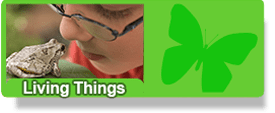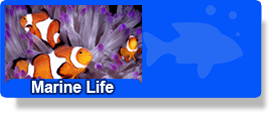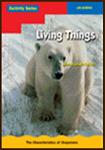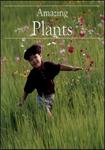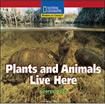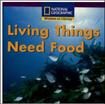Living Things
In “Living Things” children investigate the properties of living things. The inquiry unit is based on observations of animals and plants in the children’s environment. The unit is designed to help children explore important topics in biology such as:
- differences between living and non living things
- habitats and how living things are adapted to their habitats
- structure and function, or how animal bodies enable them to function and survive
Children learn about these concepts by going on nature hikes to observe living and non-living things in their environments, recording observations in their science notebooks with digital photographs and drawings and writing (using invented spelling or by telling an adult who writes what the child wishes to have recorded verbatim for the child). This unit includes eight inquiry activities and six books:
"Living Things" Books
Living Things
Living Things Author: Alan Trussell-Cullen
Publisher: Dominie Press, 2001 (Pearson School)
Contact: 1-800-848-9500
ISBN: 0-7685-0559-3
“Living Things” addresses the properties, characteristics, and habitats of living things. Children learn that all living things need air, water, and food for survival. The book also introduces children to structural characteristics of living things and their function including eyes for seeing, ears for hearing, and skeletons for holding up the body.
Living Things Need Water
Living Things Need Water Author: Sharon Street
Publisher: National Geographic School Publishing, 2001
Contact: 1-888-915-3276
Web: http://ngsp.com
ISBN: 07922-92111
The main theme of “Living Things Need Water” is that all living things require water for growth and survival. Children are also introduced to the concept of biological classification through examples of mammals, birds, reptiles, and fish.
Amazing Plants
Amazing Plants Author: Rosario Ortiz Santiago
Publisher: Abrams Learning Trends
Contact: 1-800-227-9120
Web: www.abramslearningtrends.com
ISBN: 9780766416017 (6-pack)
“Amazing Plants” introduces children to various features of plants. Children learn that plants are living things that have requirements for survival including food, water, light, and reproduction. Children learn that plants live in a variety of environments and develop structures and features for survival. For example, the book shows that plants protect themselves in a variety of ways including thorns, spines, odors, and the ability to secrete chemicals.
Whose Eye is This?
Whose Eye is This? Author: Youli Mantzicopoulos
Publisher: The Scientific Literacy Project, Purdue University, 2006
“Whose Eye is This?” centers on the idea that living things have comparable yet different structures (such as eyes) that serve similar functions. The book introduces children to the concept of animal classification through examples of mammals, birds, reptiles, and fish. In addition, the book is personalized with the child’s picture and includes questions that promote observational skills and knowledge of the properties of living things.
Plants and Animals Live Here
Plants and Animals Live Here Author: George Wong
Publisher: National Geographic School Publishing, 2001
Contact: 1-888-915-3276
Web: http://ngsp.com
ISBN:
“Plants and Animals Live Here” introduces children to various habitats for many different living organisms and to the concept that different physical environments sustain different life forms. Habitats in the book include deserts, plains, mountains, forests, and wetlands. In addition, the book introduces children to the concept of interdependence of living things across a number of different ecosystems.
Living Things Need Food
Living Things Need Food Author: Keith Pigdon
Publisher: National Geographic School Publishing, 2001
Contact: 1-888-915-3276
Web: http://ngsp.com
ISBN: 07922-43129
“Living Things Need Food” teaches children about the concept of a food chain: a grouping of living things in which matter and energy are transferred from one organism to another in the form of food. Children begin to understand that the predator and prey relationship between certain animals and between plants and animals is necessary for survival.



